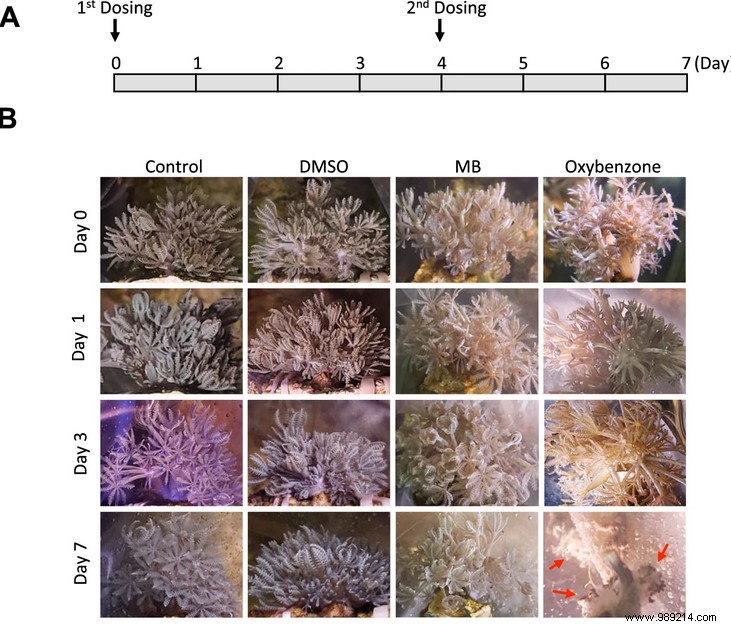As summer approaches, the question of buying sunscreen arises. An essential accessory for summer holidays, this product is regularly the subject of criticism and scientific research. In the United States, researchers are testing a rather surprising alternative:methylene blue.
Sunscreen remains the main tool for protecting yourself from UVA and UVB rays. However, the Palau archipelago has become the first territory in the world to ban this product, a measure which will take effect this year. The archipelago that is part of Micronesia passed this law because of the presence of two products deemed harmful :oxybenzone and ethylhexyl methoxycinnamate. Remember that substances such as oxybenzone act as a chemical UV filter, absorbing part of UVA (320-440 nm) and UVB (280-320 nm). These are respectively responsible for oxidative stress causing skin aging, burns and other impacts on DNA.
Despite this effective protection, oxybenzone is considered to be an endocrine disruptor and a source of allergies. In addition to the question of health, that of the environment is also preponderant. The substance literally poisons marine ecosystems, with the famous victims of corals. In a study published in the journal Scientific Reports on May 28, 2021, researchers at the University of Maryland (United States) propose a novel chemical UV filter, namely methylene blue.
Methylene blue (or methylthioninium chloride) is a substance that first appeared in 1876, following the work of the Prussian chemist Heinrich Caro. It is a derivative of phenothiazine, both drug and dye . However, its antioxidant power as well as its molecular structure gave the idea to American researchers to carry out tests to find out if the substance could act as a chemical UV filter and replace oxybenzone.
You should know that this scientific team has already proven that methylene blue can activate the metabolic pathways allowing DNA repair . In furthering their work, they exposed human keratinocytes – cells covering the skin – to increasing doses of UVB following treatment with methylene blue. According to the results, the treated cells suffered less damage than the untreated ones. In addition, by comparing the filtering capacities of methylene blue with those of oxybenzone, the scientists indicated that methylene blue absorbed a wider range of UV. Indeed, this substance is able to filter out UVB and high energy UVC.
For environmental toxicity, researchers conducted further tests using the coral species Xenai umbellata . For seven days, they observed the state of health of corals, on one side exposed to methylene blue and on the other to oxybenzone – at an equal dose (1µM). After the experiment, the scientists observed a degradation in the health of the corals on the oxybenzone side but not on the methylene blue side.

Although this experience does not confirm firmly the non-toxicity of methylene blue, it might be relevant as an alternative. Nevertheless, the researchers will have to conduct other tests concerning the environment more broadly. Thus, methylene blue will not integrate the manufacture of sunscreens before Science gives more certainties.